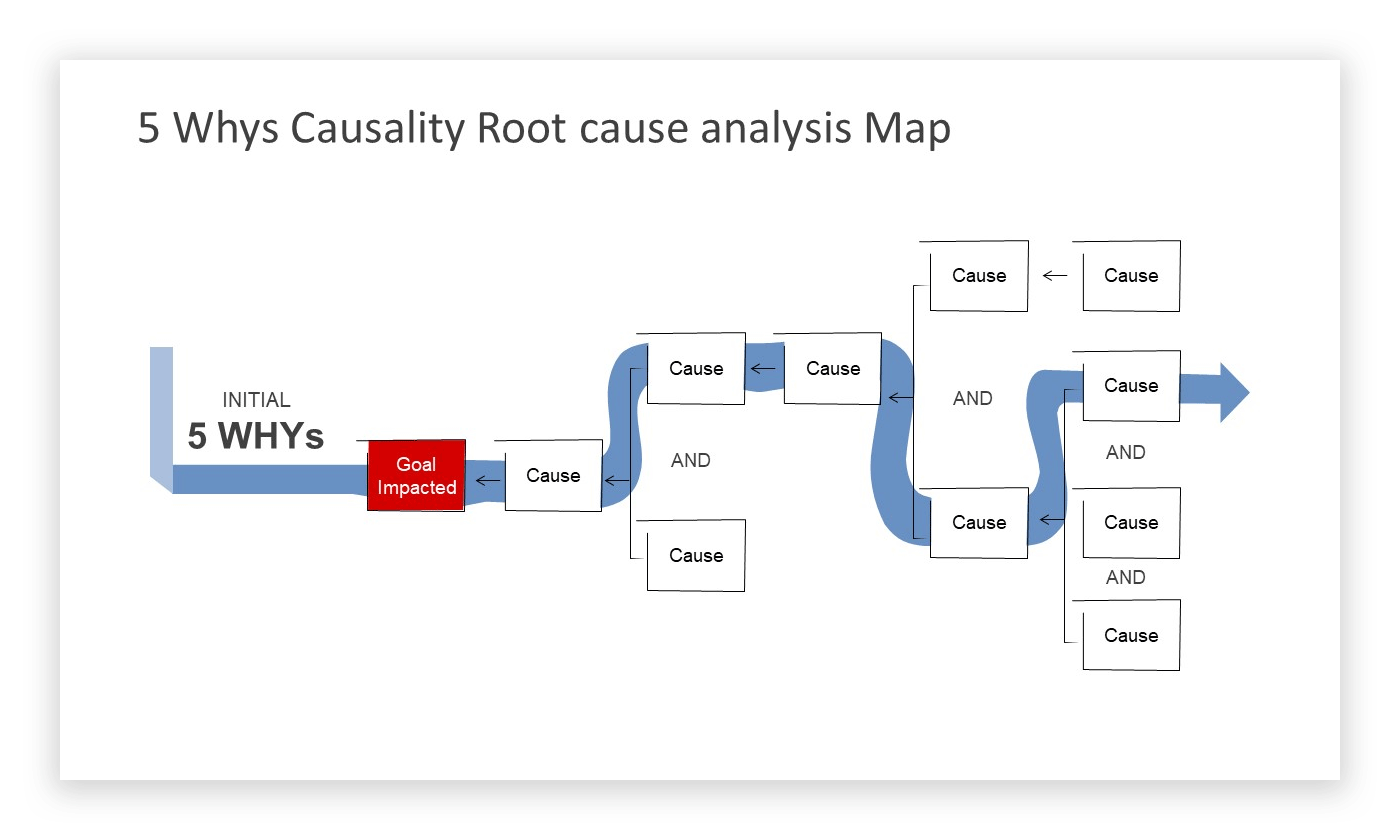The 5 Whys Technique: A Game-Changer in Problem-Solving and Presentations
Last updated on April 23rd, 2024

In today’s fast-paced, solution-oriented business landscape, the ability to troubleshoot problems swiftly and efficiently is a crucial skill. Enter the 5 Whys technique, a powerful tool capable of uncovering the root cause of issues in various domains, including the craft of presentation-making. This article aims to illuminate the potential of the 5 Whys, detailing its use, applications, and its unique intersection with the art of delivering effective presentations.
Understanding the 5 Whys Technique
Developed by Sakichi Toyoda, the founder of Toyota Industries, the 5 Whys technique is a simple yet potent method for problem-solving and decision-making. It is a core component of lean management and allows for quick identification of the root cause of a problem by repeatedly asking ‘why’—typically five times, hence the name. It has found resonance in diverse fields from manufacturing to marketing, and from psychology to presentations.
The 5 Whys Technique Explained: Step-by-Step
How can we use the 5 Why technique? Here is a simple step-by-step process:
- Identify the Problem: Clearly articulate the issue at hand.
- Ask ‘Why’ the problem exists and note the answer.
- If the answer does not identify the root cause, ask ‘why’ again and note the subsequent response.
- Continue this process until you arrive at the root cause of the problem, often after the fifth ‘why’.
- Develop a strategy to address the root cause to prevent the problem from recurring.
The 5 Whys Technique in Business: Who Can Use It?
The 5 Whys technique makes it a valuable tool across multiple functions within an organization. For project managers, it’s an effective way to troubleshoot project bottlenecks. Analysts use it to decipher complex data sets and identify underlying trends. Marketing teams leverage it to understand consumer behavior and shape effective strategies. Presentation designers can also use it as part of their design process.
The 5 Whys Technique for Presentations
When preparing a presentation, the 5 Whys technique can help discern the need for including specific content or slides. For instance, if you’re unsure about adding a particular slide, ask yourself, ‘why is this slide necessary?’ Your answers will guide you towards a presentation that is concise, meaningful, and impactful.
Presenting a 5 Whys Analysis
When presenting a 5 Whys analysis to an audience, clarity and simplicity are key. Ensure each ‘why’ and its corresponding answer are succinctly presented on your slide. SlideModel explained it well in the article how to present a 5 Whys analysis to an audience, and also provided some real-life examples & presentation templates. Use straightforward language, and be ready to address potential questions from your audience, giving them a clear understanding of your problem-solving journey.
5 Why PowerPoint Templates
If you want to present a 5 Why Analysis to an audience, you can use pre-defined 5 Why PowerPoint templates instead of designing your slides from scratch. Here are some examples (free and paid) of 5 whys template that you can use.
1. 5 Whys Causality Root template for PowerPoint (Paid)

2. Free 5 Whys Slide Template for PowerPoint (Free)

3. 5 Whys template for PowerPoint & Google Slides by SlideHunter
If you are looking for an easy to edit 5 Whys template for PowerPoint & Google Slides, this free PPT template can meet your needs. It is provided as a .pptx file with text placeholders that you can edit.

Case Studies of the 5 Whys Technique in Action
Case 1: A software development company was experiencing frequent project delays. Through the 5 Whys, they discovered that the root cause was a lack of clear communication between the development and testing teams. A new communication protocol was implemented, significantly reducing project delays.
Case 2: A retail brand was struggling with declining sales. The 5 Whys analysis revealed that the primary issue was an outdated inventory that didn’t appeal to the brand’s target demographic. The brand revamped its product range, leading to a substantial increase in sales.
Alternatives to the 5 Whys Analysis Technique
While the 5 Whys is a valuable tool, other techniques like the Fishbone Diagram or Root Cause Analysis may be better suited for complex problems that require a more nuanced approach. These methods allow for a more detailed breakdown of problems, examining multiple causative factors simultaneously.
Conclusion
The 5 Whys technique stands as an essential instrument in the problem-solver’s toolkit, providing a straightforward path to root-cause identification. Its applicability in the realm of presentation-making underscores its versatility, enabling the creation of more cogent and impactful presentations. As modern professionals, embracing the 5 Whys can enhance our problem-solving prowess, leading to greater efficiency and success in our respective fields.

Please send me updates